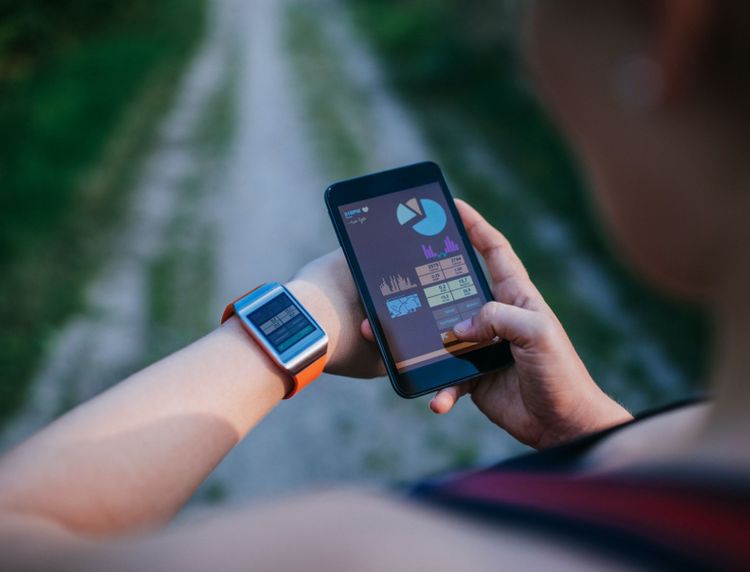High Fiber Fruits
While the significance of a balanced diet and healthy nutrition is undeniable; there are a few specific nutrients that have a great impact on your overall health. One such unsung nutrient hero is fibre. With fibre present in a load of edibles, fruits with high fibre content stand out.
In our busy day-to-day lives, a lot of us fall short of incorporating enough high-fibre fruits into our daily diet. In this blog, we will shed light on high-fibre fruits and the practical ways to boost fibre consumption for a healthful diet.
Share this article
Explore the Best Health Insurance Plans for Your Needs
List of Content
- What is Fibre and Their Types?
- High Fibre Fruits: What Fruit is Highest in Fibre?
- Ways to Include High-Fibre Fruits in Your Diet <
- Benefits of High Fibre Fruits
- Potential Side Effects and Safety Precautions
- Conclusion
What is Fibre and Their Types?
Fibre, in a broad sense, refers to any material that is long, thin, and flexible. Dietary fibre, often referred to as roughage or bulk, is a type of carbohydrate that is predominantly found in plant-based foods.
Unlike other carbohydrates, such as sugars and starches, dietary fibre is not fully digested by the human body. Instead, it passes through the digestive system relatively intact, playing a crucial role in promoting digestive health.
Dietary fibre can be broadly categorised into two main types:
Soluble Fibre: This type dissolves in water, forming a gel-like substance. It can help lower blood cholesterol and regulate blood sugar levels. Good sources of soluble fibre include oats, barley, fruits, and legumes.
Insoluble Fibre: This type does not dissolve in water and adds bulk to the stool, aiding in digestion and preventing constipation. Whole grains, vegetables, and nuts are rich sources of insoluble fibre.
High Fibre Fruits: What Fruit is Highest in Fibre?
Not all fruits are created equal when it comes to fibre content, so why not opt for the most fibre-rich options?
The following are the best fruits for fibre with the highest fibre content, ensuring you get the most nutritional benefits from your fruity snacks:
| Fruits | Fibre Content |
|---|---|
| Avocado | 6.7g |
| Raspberries | 6.5g |
| Guava | 5.4g |
| Passion Fruit | 5.4g |
| Blackberries | 5.3g |
| Kiwi | 3.0g |
| Pear | 3.1g |
| Apple (with skin) | 2.4g |
| Strawberries | 2.0g |
| Banana | 2.6g |
| Orange | 2.3g |
| Mango | 1.6g |
| Pineapple | 1.4g |
| Peach | 1.5g |
| Plum | 1.4g |
| Watermelon | 0.4g |
| Grapes | 0.9g |
| Cantaloupe | 0.9g |
| Apricot | 2.0g |
| Cherry | 2.1g |
Example of Some Top Fibre Content Fruits with Low Sugar Content
If you are looking for high-fibre fruits for diabetics, you need to consider fruits with low sugar content. When it comes to fruits for people watching their weight or managing diabetes, finding the perfect balance of high fibre and low sugar content is a nutritional jackpot.
The following are a few of the fruits with high fibre content and low sugar content which not only satisfy your sweet cravings but also provide a substantial dose of dietary fibre while keeping sugar levels in check:
Avocado: Avocados are not only creamy and delicious but also boast an impressive 6.7 grams of fibre per 100 grams. They are one of the best fruits for fibre and are a great source of monounsaturated fats, known for supporting heart health, and they contain various vitamins and antioxidants.
| Fruit | Fibre Content | Sugar Content |
|---|
| Fruit | Fibre Content | Sugar Content |
|---|---|---|
| Raspberries | 6.5g | 4.4g |
Guava: With 5.4 grams of fibre and 5.4 grams of sugar per 100 grams, guava is a tropical delight that supports digestive health. Guava is renowned for its exceptionally high vitamin C content, promoting immune function, and aiding digestion.
| Fruit | Fibre Content | Sugar Content |
|---|---|---|
| Avocado | 6.7g | 0.7g |
Passion Fruit: Offering 5.4 grams of fibre per 100 grams, passion fruit is a tropical treasure for those seeking a fibre boost. Low in calories and high in fibre, passion fruit provides essential nutrients like vitamin C, promoting overall well-being.
| Fruit | Fibre Content | Sugar Content |
|---|---|---|
| Guava | 5.4g | 11.2g |
Blackberries: Blackberries boast 5.3 grams of fibre and 4.5 grams of sugar per 100 grams, blackberries are rich in antioxidants and vitamins, which support improved cognitive function and overall health.
| Fruit | Fibre Content | Sugar Content |
|---|---|---|
| Avocado | 5.3g | 4.5g |
Choosing high-fibre foods with low sugar is a smart and flavourful way to support your health goals. By incorporating such fruits into your diet, you not only satisfy your sweet tooth but also nourish your body with essential nutrients.
Raspberries: At 6.5 grams of fibre per 100 grams, raspberries are a delightful and fibre-packed addition to your diet. With 4.4 grams of sugar, raspberries are also safe high-fibre foods for diabetics to consume.
Ways to Include High-Fibre Fruits in Your Diet <
Accepting a diet rich in fibre is a cornerstone of good health, and what better way to achieve this than by incorporating high-fibre fruits into your daily meals?
Here are a few easy recipes to enjoy the goodness of the best fruit for fibre, making your journey towards a healthier lifestyle:
Fibre-Packed Breakfast Bowl:
Ingredients:
1 cup Greek yoghourt
1/2 cup raspberries
1/2 cup sliced strawberries
1/4 cup granola
1 tablespoon chia seeds
Honey or maple syrup for sweetness (optional)
Instructions:
In a bowl, layer Greek yoghurt as the base.
Top with raspberries and sliced strawberries for a burst of colour and flavour.
Sprinkle granola for crunch and chia seeds for an extra fibre boost.
Drizzle with honey or maple syrup if you desire added sweetness.
Mix it all together or enjoy the layers separately for a satisfying and fibre-rich breakfast.
Avocado and Black Bean Wrap:
Ingredients:
1 whole-grain tortilla
1/2 ripe avocado, sliced
1/2 cup black beans, cooked and drained
1/4 cup diced tomatoes
2 tablespoons diced red onion
Fresh cilantro for garnish
Lime wedges for squeezing
Instructions:
Lay the whole-grain tortilla on a flat surface.
Arrange avocado slices in the centre of the tortilla.
Add black beans, diced tomatoes, and red onion on top of the avocado.
Garnish with fresh cilantro and squeeze lime wedges over the ingredients.
Fold the sides of the tortilla and roll it up to create a delicious and fibre-filled wrap.
Passion Fruit and Kiwi Smoothie:
Ingredients:
1 ripe banana
1 passion fruit, pulp scooped out
1 kiwi, peeled and sliced
1/2 cup Greek yoghourt
1/2 cup almond milk
Ice cubes (optional)
Instructions:
In a blender, combine the ripe banana, passion fruit pulp, sliced kiwi, Greek yoghurt, and almond milk.
If you prefer a cooler smoothie, you can add ice cubes.
Blend until smooth and creamy.
Pour into a glass and savour the tropical flavours of this fibre-rich smoothie.
Benefits of High Fibre Fruits
Weight Management: Fibre-rich foods, such as fruits and vegetables, play a crucial role in maintaining a healthy weight by promoting a prolonged feeling of fullness.
Diabetes Risk: Incorporating fruits that contain fibre into one's diet helps regulate sugar absorption, preventing rapid spikes and aiding in the control of post-meal sugar levels, thereby reducing the risk of diabetes.
Gut Health: Both soluble and insoluble fibres contribute to digestive well-being by increasing good gut bacteria, promoting regular bowel movements, and preventing issues like constipation and diarrhoea. Therefore, try to incorporate some high-fibre fruits for gut health and digestion.
Cancer Risk: Certain fibres, like pectin, possess antioxidant properties, offering protection against specific types of cancers, including colon cancer.
Cholesterol Levels: Soluble fibres engage with bile acids in the body, facilitating their removal. As a result, the liver utilises cholesterol from the bloodstream to produce new bile acids, effectively reducing cholesterol levels and safeguarding heart health.
Despite the multitude of benefits associated with fruits that contain fibre, it often remains overlooked. Inadequate fibre intake can lead to various health issues, including inflammation and cardiovascular diseases. While the benefits of fibre are substantial, it is essential to note that excessive consumption can have adverse effects on the body.
Potential Side Effects and Safety Precautions
Excessive fibre consumption, surpassing the recommended levels, may result in:
abdominal discomfort, increased flatulence
inadequate absorption of minerals and vitamins
gas, bloating, diarrhoea
To alleviate symptoms of excessive fibre intake, consider the following measures:
Avoid high-fibre foods
Increase water intake
Adopt a bland diet
Discontinue any fibre supplements you may be taking
Conclusion
High-fibre fruits supply your body with essential nutrients and ensure its smooth functioning. While maintaining a healthy diet contributes to your well-being, complementing it with a medical insurance plan is a prudent choice.
Opting for the right health insurance guarantees access to crucial financial assistance for expensive medical treatments and tests whenever needed, ensuring your health remains in optimal condition.
At Tata AIG, we provide a range of medical insurance plans tailored to your specific requirements, allowing you to prioritise your well-being. It is advisable to buy health insurance online and select a plan that offers maximum benefits while addressing all your needs.
With our customisable medical insurance plans, you can enjoy the benefits of health insurance like cashless treatment at a hospital of your choice, quick claim settlement, extensive policy coverage and more.
Disclaimer: This is a general guide on high-fibre fruits. It is not intended to be a substitute for professional medical advice and should not be relied on as health or personal advice. It is advisable to consult a qualified health professional for treatment in severe cases.
Explore the Best Health Insurance Plans for Your Needs
Share this article
Latest from our blogs

15 terms you must know before buying health insurance
We have listed all 15 terms a health insurance buyer should ...
Read More
How Much Health Insurance Do You Need?
While more and more people are getting insurance for things ...
Read More
4 simple steps to claim MediClaim in India
Check that all the documents contain required information li...
Read More